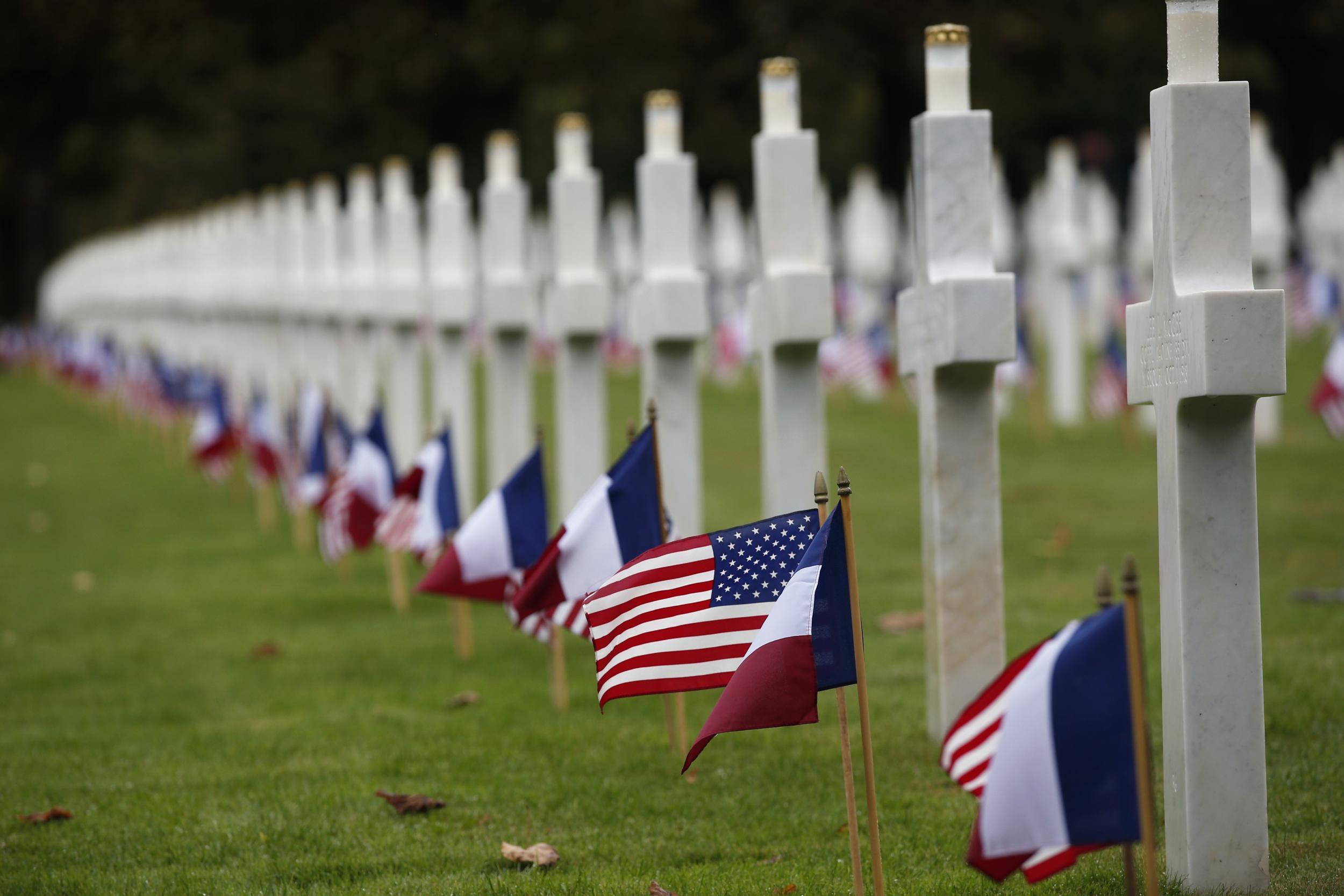Meuse-Argonne Offensive: US remembers deadly battle 100 years on
"Let them learn the history of what these men did 100 years ago," says William Matz secretary of the American Battle Monuments Commission

Your support helps us to tell the story
From reproductive rights to climate change to Big Tech, The Independent is on the ground when the story is developing. Whether it's investigating the financials of Elon Musk's pro-Trump PAC or producing our latest documentary, 'The A Word', which shines a light on the American women fighting for reproductive rights, we know how important it is to parse out the facts from the messaging.
At such a critical moment in US history, we need reporters on the ground. Your donation allows us to keep sending journalists to speak to both sides of the story.
The Independent is trusted by Americans across the entire political spectrum. And unlike many other quality news outlets, we choose not to lock Americans out of our reporting and analysis with paywalls. We believe quality journalism should be available to everyone, paid for by those who can afford it.
Your support makes all the difference.The Meuse-Argonne Offensive was a deadly battle in which tens of thousands US soldiers were killed in France as part of an allied effort to push the German army out of the country.
The deadly battle that took place a century ago is notably credited as one of the allied attacks that helped bring an end to the First World War.
US troops have recently travelled to the Meuse-Argonne American Cemetery in France to honour those who fought and sacrificed their lives.
What was the Meuse-Argonne Offensive?
The Meuse-Argonne Offensive of 1918 took place in the Verdun region of France. The battle lasted for several weeks with ten of thousands of men on all sides killed – and a reported number of more than 26,000 US soldiers lives lost. Historians have labelled it America’s deadliest fight.
“In its scale and in the number of American and French troops involved, not only infantry but artillery, tanks, engineers… just the logistics in this, made it the largest operation that the American armed forces had been in to that point,” said Doran Cart, a senior curator at the National WWI Museum and Memorial in Kansas City in an interview with Fox News.
When did the Meuse-Argonne Offensive take place?
The battle began on 26, September 1918.
How is the battle recognised today?
The Meuse-Argonne American Cemetery and Memorial in France covers 130 acres and “rest the largest number of our military dead in Europe, a total of 14,246”, the site states.
Officials and descendants of soldiers visited the memorial located in Romagne-sous-Montfaucon, a village in northeastern France on Sunday 23, September. Volunteers read soldiers’ names aloud as part of the commemorative event.
William M. Matz, secretary of the American Battle Monuments Commission told the Associated Press he believes it is important for younger generations to learn about this part of history.
“I think it’s important for their teachers, their parents to bring them to these beautiful sites, let them walk through the rows of crosses, let them look at the walls of remembrance, let them go into the cemetery chapels and let them learn the history of what these men did 100 years ago”.
Join our commenting forum
Join thought-provoking conversations, follow other Independent readers and see their replies
Comments